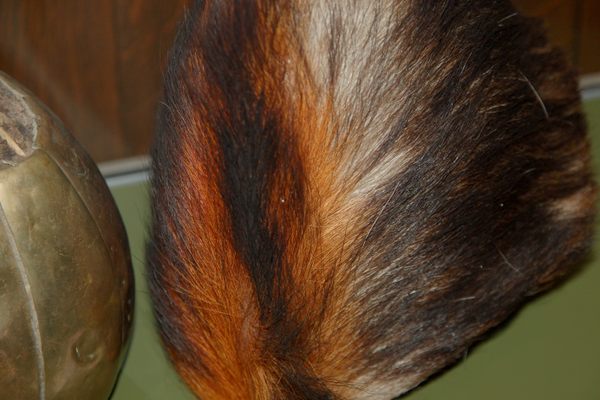Raised from the Depths, a 16th Century Ship and Her Crew Return to Public View
The Mary Rose warship (via Wikimedia)
Today the relics of a warship that sank in the 16th century are again on public view. The new Mary Rose Museum in Portsmouth, England, was unveiled yesterday and is now open to the public, and in the heart of this sleek new structure is the skeletal wooden hull of what was Henry VIII’s flagship.
Built in 1510 from about 600 oak trees, the Mary Rose had an illustrious battling career until it sank in 1545 just outside the Portsmouth Harbor. There’s some debate over whether or not the invading French forces were to blame (the French, of course, say they took down the formidable ship, the English say it was an accident), but no matter the circumstances, it sank. So did much of the over 400 member crew, with only about 30 making it out alive due to the netting over the deck that was meant to keep off enemy soldiers. The screams of the crew were said to have been so violent as to be heard on the shores. And there they remained beneath the water, until the ship was found in 1971, and then raised from the depths in 1982.
Preserving the Mary Rose (via Mary Rose Trust)
An extensive preservation process was necessary for the impressively intact ship. First it spent years being sprayed with water, and then wax, and now in its new museum it’s drying out until 2017. Visitors can gaze at it from windows around its form, and in the exhibition galleries are about 19,000 artifacts. There’s even forensic recreations of seven crew members, and one dog, based on a few of the skeletons recovered.
The Mary Rose Museum on the left, the HMS Victory on the left (via The Mary Rose Museum)
No other 16th warship is on display like this in the world, although its museum sits alongside the 18th century HMS Victory, used by Nelson in the Battle of Trafalgar, another engagement with the French. Because of all the Tudor history preserved with the wreck, historian David Starkey has called the Mary Rose “Britain’s Pompeii,” according to the BBC.
HENRY VIII’S FLAGSHIP: THE MARY ROSE MUSEUM, Portsmouth, United Kingdom









Follow us on Twitter to get the latest on the world's hidden wonders.
Like us on Facebook to get the latest on the world's hidden wonders.
Follow us on Twitter Like us on Facebook